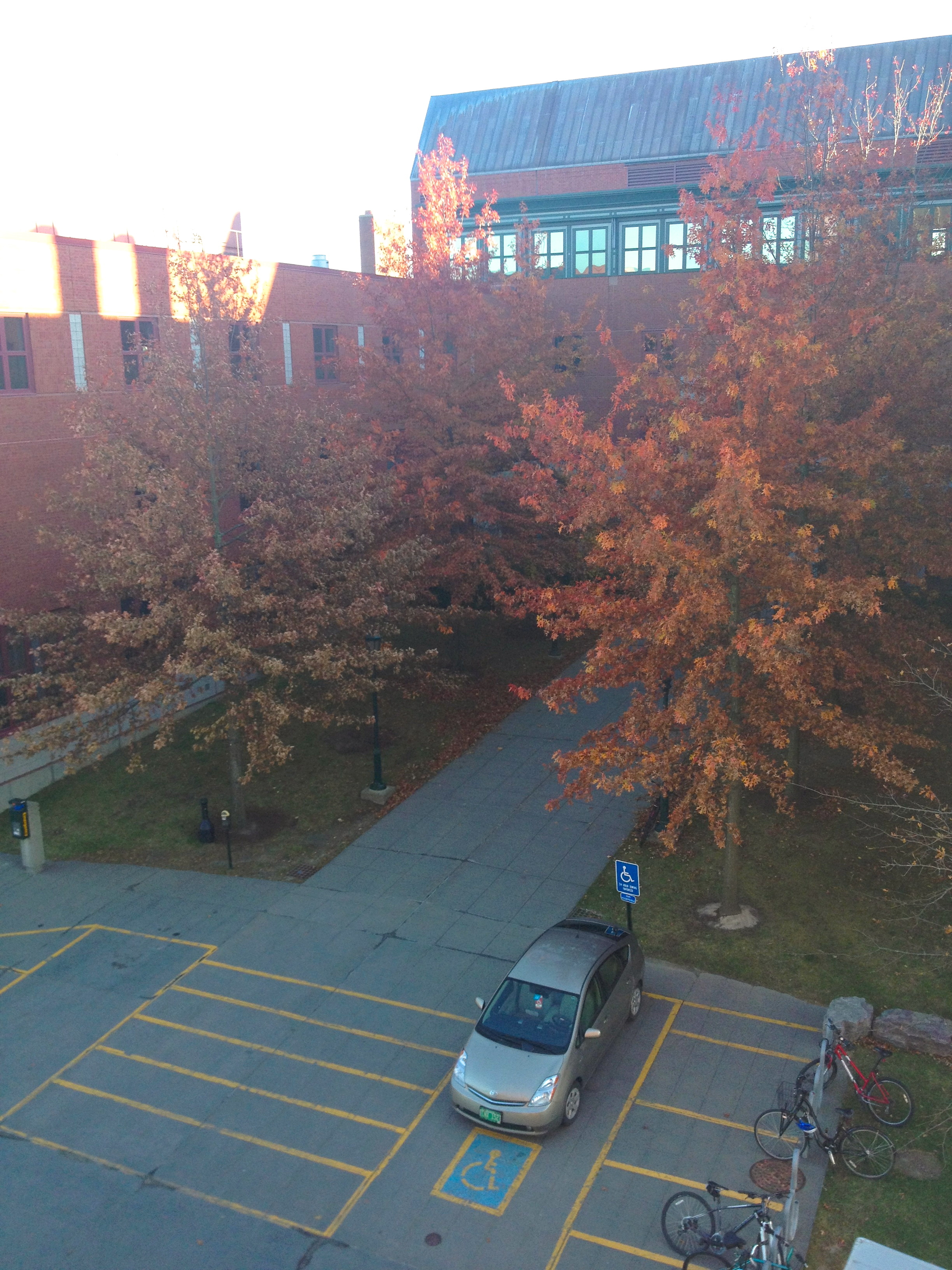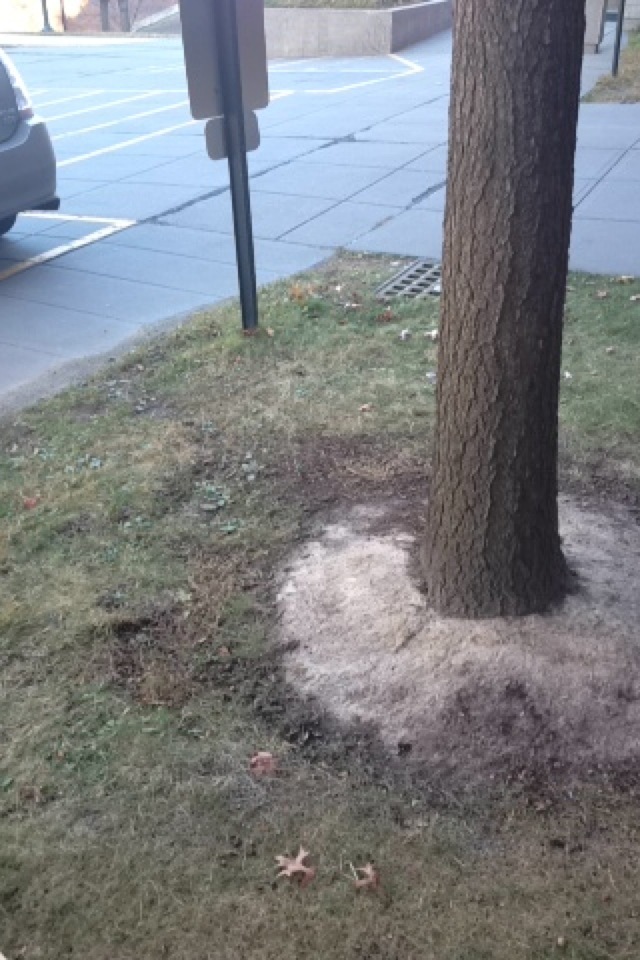Pin Oak : Pin Oak- Adaption & Ornamental Use
One of the pin oak’s most predominant feature is its incredible adaptability. The pin oak is able to survive in a wide range of soil and can tolerate fairly dry areas, but is most successful in moist and acidic areas, and cannot tolerate a pH level of 7 or above. For such a large size, the tree grows exceptionally well in downtown spaces and conditions, making it one of the most useful urban trees. The tree is very convenient for transplanting because of its shallow and fibrous root system. The pin oak will also grow in conditions that are very cramped and not ideal for plant growth, as shown in the photograph of the pin oaks outside of the Old Mill, located on UVM campus.
The spatial definition and dense form makes the tree very popular in many city areas. The tree’s beautiful fall color and adaptability are conditions that make the pin oak so popular as an ornamental tree. In public places, the pin oak’s large canopy cover and handsome shape makes the tree an excellent source of shade. As a street tree, the lower branches are commonly removed. The pin oak is also a favorite of nursery professionals because of its rapid growth, ease in transplant, and its attractive and uniform shape.


